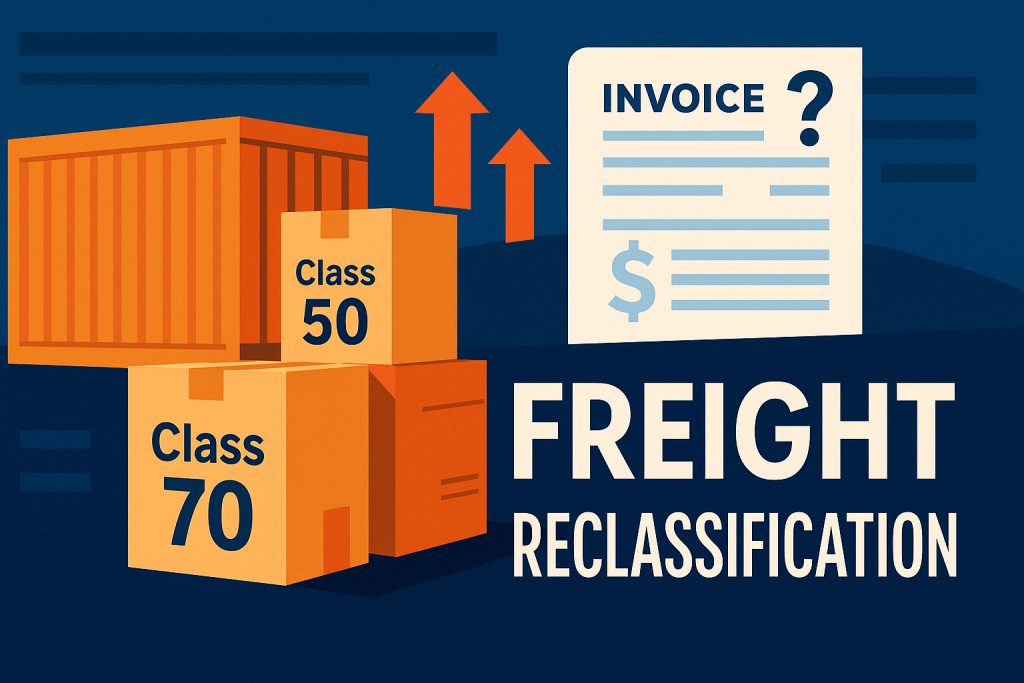Why Your Freight Keeps Getting Reclassified and What To Do About It
Reclassification charges can quietly inflate your shipping costs. One minute you're quoting Class 70, and the next you're billed at Class 150 with little explanation beyond a vague code on the invoice. So what’s actually happening?
What's Causing All These Reclassifications?
Inaccurate Freight Descriptions
Carriers rely on the NMFC system to assign freight classes based on density, stowability, handling, and liability. If your description is vague or outdated, such as listing “equipment” instead of “metal brackets in boxes,” the carrier may reclassify the shipment.
Density-Based Reclassifications
Carriers often verify actual weight and dimensions, then calculate density. If the density falls outside the expected range for the declared NMFC number or subclass, the freight may be reclassified. This is especially common with lightweight but bulky shipments where the volume drives the class higher than expected.
Outdated NMFC Numbers
The NMFTA regularly updates classification standards. If you're using an old NMFC number that no longer applies, reclassification is likely and may go unnoticed until the invoice arrives.
Carrier Audits
Many carriers now use automated audits with dimensioners and imaging systems. Even small inconsistencies in packaging, stacking, or pallet size can trigger a class review and adjustment.
What You Can Do About It
Audit Every Invoice
Use freight audit tools that compare billed versus expected class, weight, and NMFC. Automating this through your TMS can make the review process much faster.
Negotiate FAK Rates to Reduce Classification Risk
One of the best ways to manage reclassification exposure is by negotiating FAK (Freight All Kinds) rates. These allow multiple NMFC classes to be billed at a single, agreed-upon class. For example, if your freight typically ranges between Class 55 and 125, you may be able to secure a flat rate under FAK 70 or FAK 85. This simplifies billing and shields you from unexpected adjustments based on density or packaging.
Improve Internal Item Master Data
Ensure your shipping system has accurate weight, dimensions, and packaging details for each SKU. The more complete your data, the fewer surprises you’ll see on your invoice.
Stay Informed on NMFC Changes
Monitor updates directly through the NMFTA's ClassIT system or docket publications. For more proactive coverage, consider working with a freight audit partner or 3PL who tracks and alerts you to relevant NMFC adjustments.
Align Vendor Shipping Practices
If third parties ship on your behalf, make sure they follow your packaging and labeling standards. Many reclassification issues originate with vendors upstream.
Final Thoughts
Reclassifications are often preventable. They point to breakdowns in data accuracy, packaging, or compliance that can be fixed with the right tools and attention. Teams using a TMS alongside a solid freight audit process are better equipped to catch discrepancies early and keep shipping costs under control.




